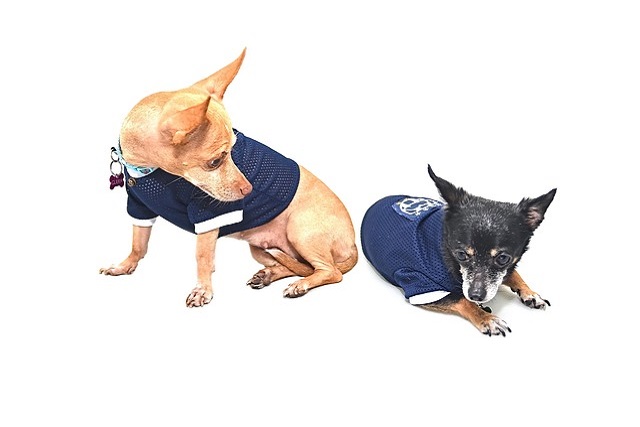
How do i train my dog to be obedient?
Watching your dog dart across the park ignoring your calls isn’t just frustrating—it can put them at risk near busy streets or public spaces.
That chewed-up sofa or shredded shoe isn’t just frustrating—it’s your dog crying out for help. Destructive behavior rarely stems from spite; it’s usually boredom, anxiety, or unmet instincts screaming for attention. Before you react, take a breath. Punishment often backfires, damaging trust and worsening the problem. Instead, become a detective. What’s triggering this? Is it loneliness after you leave? Pent-up energy? Or maybe teething discomfort in a young pup? Pinpointing the "why" is half the battle won.
Rule out health issues first. A sudden urge to gnaw walls or dig carpets could signal dental pain, nutritional deficiencies, or thyroid problems. Schedule a vet visit—it’s non-negotiable. Undiagnosed discomfort turns even gentle dogs into frantic destructors. Your vet might recommend bloodwork or a diet change. Trust this step; masking pain with training fails every time.
Prevention is your strongest ally. Manage their environment ruthlessly. Use baby gates to restrict access to tempting areas when unsupervised. Crate train only if your dog views the crate as a safe haven—never as punishment. For determined chewers, invest in indestructible mats or heavy-duty playpens. Rotate high-value chew toys (think Kongs stuffed with frozen peanut butter) to keep boredom at bay. Out of sight, out of mouth—it’s that simple.
Drain their energy—mentally and physically. A tired dog is a good dog. Swap one long walk for two shorter, sniff-filled adventures. Mental stimulation matters just as much: try puzzle feeders, scent games, or 5-minute training sessions. For high-drive breeds, channel that energy constructively—agility basics or flirt pole play in the backyard. Unspent energy fuels destruction. Period.
Teach "what to chew" through positive redirection. Catch them eyeing your slipper? Calmly say "Oops!" and instantly offer an approved chew toy. When those jaws clamp on their toy, shower them with praise. Consistency rewires habits. Stock up on textured options (rubber, rope, collagen) to satisfy natural urges. And yes, sometimes bitter apple spray on table legs saves furniture.

Address separation anxiety thoughtfully. If destruction peaks when you’re gone, it’s likely panic—not rebellion. Start desensitizing departure cues: jingle keys, then sit back down. Build up to brief absences (seconds, then minutes). Never make arrivals/departures emotional events. For severe cases, consult a certified behaviorist—many offer virtual sessions now. In apartments, consider noise ordinances; a distressed, destructive dog can lead to neighbor complaints.
Know your local leash laws and nuisance regulations. A dog digging up a public park or chewing a neighbor’s fence isn’t just "misbehaving"—it could violate ordinances or homeowner association rules. Responsible ownership means proactively managing behavior to avoid conflicts. Leash training and secure fencing aren’t optional; they’re community expectations.
When progress stalls, call the pros. Certified Professional Dog Trainers (CPDT-KA) or Veterinary Behaviorists (Dip ACVB) offer science-backed plans. Avoid trainers promising instant fixes or using shock collars—these escalate fear-based destruction. Group classes? Great for socialization, but private sessions target specific issues faster. Your investment pays off in peace (and intact belongings).
Patience isn’t optional—it’s essential. Setbacks happen. Celebrate tiny wins: the day they chose a bone over your baseboard. Stay consistent with routines and rewards. And forgive yourself when you’re exasperated. This journey reshapes not just behavior, but your bond. Those calm evenings with a content, chew-toy-focused pup? Worth every shredded pillow along the way.

Watching your dog dart across the park ignoring your calls isn’t just frustrating—it can put them at risk near busy streets or public spaces.

New puppy owners often find themselves rushing to clean up accidents before they set in, and that’s where puppy pad training becomes a game-changer.

If you've noticed your dog's waistline disappearing and your veterinarian has mentioned those few extra pounds, your first instinct might be to simply reduce the amount of food in their bowl.

Training a dog to use a designated spot indoors isn’t as daunting as many new owners fear, but it does take consistency and an understanding of your pet’s needs.

That moment of dread on a walk is all too familiar for many new dog owners. You see another dog approaching down the sidewalk of your neighborhood

If the sight of another dog on your neighborhood walk makes your heart sink as your own dog erupts into a frenzy of barking and lunging, you're not alone.